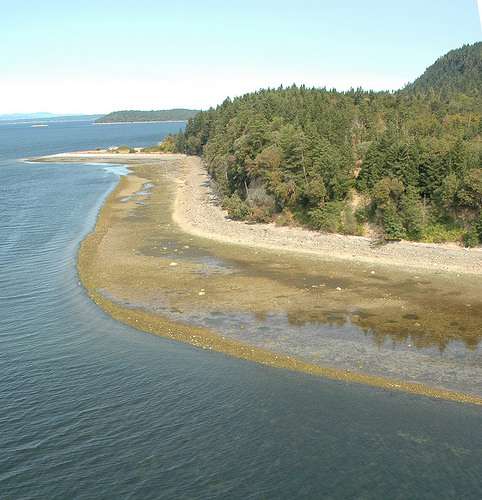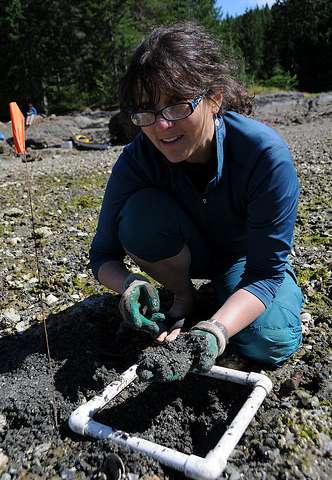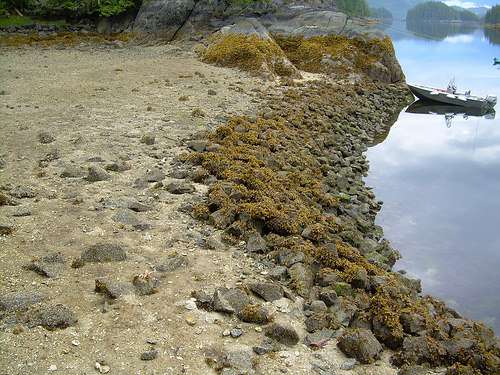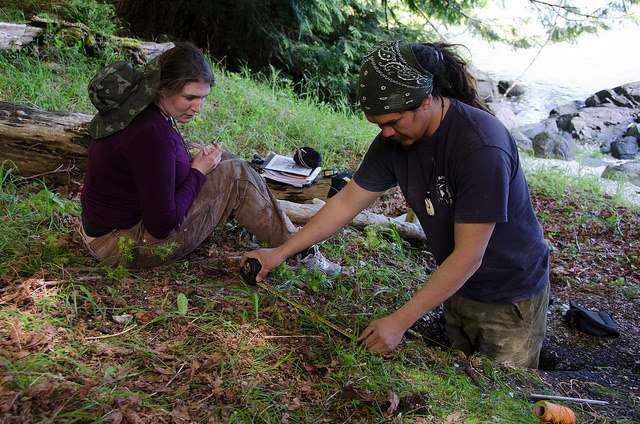Study finds ancient clam beaches not so natural

In their second study to be published in just over a year, an SFU led team of scientists has discovered that ancient coastal Indigenous people were more than hunter-gatherers.
Casting a large interdisciplinary research net has helped Simon Fraser University archaeologist Dana Lepofsky and 10 collaborators dig deeper into their findings about ancient clam gardens in the Pacific Northwest and formulate new perspectives.
Lepofsky's research team has discovered that Northwest Coast Indigenous people didn't make their living just by gathering the natural ocean's bounty. Rather, from Alaska to Washington, they were farmers who cultivated productive clam gardens to ensure abundant and sustainable clam harvests.
In its new paper published by American Antiquity, Lepofsky's team isolated novel ways to date the stone terraces that created clam beaches. They are certainly more than 1,000 years old and likely many thousands of years older. The researchers identified many places where people built gardens on bedrock—creating ideal clam habitats where there was none before. This, the researchers concluded, clearly challenges the notation that First Nations were living in wild, untended environments.
"We think that many Indigenous peoples worldwide had some kind of sophisticated marine management, but the Pacific Northwest is likely one of the few places in the world where this can be documented," says Lepofsky. "This is because our foreshores are more intact than elsewhere and we can work closely with Indigenous knowledge holders."
The researchers, who worked with First Nations linguistic data, oral traditions and memories, geomorphological surveys, archaeological techniques and ecological experiments, belong to the Clam Garden Network. It's a coastal group interested in ancient clam management.
"Understanding ancient marine management is relevant to many current issues," adds Lepofsky.
Her team is comparing clam garden productivity to that of modern aquaculture and assessing whether the shell-rich beaches of clam gardens help buffer against increasing ocean acidification. The team will also build experimental clam gardens, applying many of the traditional cultivation techniques learned from First Nations collaborators as a means of increasing food production and food security today.
This latest study is on the heels of one done a year ago by Lepofsky and her collaborators. The original three year study published in PLOS ONE found that these ancient gardens produced quadruple the number of butter clams and twice the number of littleneck clams as unmodified clam beaches. It was the first study to provide empirical evidence of the productivity of ancient Pacific Northwest clam gardens and their capacity to increase food production.
-

SFU archaeologist Dana Lepofsky participates in the ecological survey of clams in clam garden. -

Clam garden in the Broughton Archipelago. Note how the lower intertidal zone rock wall has created a terrace of shell hash in the mid-intertidal, creating productive clam habitat in a location where there wasn’t even a beach before. Credit: John Harper -

Misha Puckett (SFU MA student) and Louie Wilson (Cape Mudge Band and Hakai Institute) excavating a shell midden associated with a clam garden that was built on a bedrock outcrop. Much of the large village associated with this clam garden relied on the food from the associated clam garden beaches. Credit: Mark Wunsch
More information: "Ancient Clam Gardens Increased Shellfish Production: Adaptive Strategies from the Past Can Inform Food Security Today." PLoS ONE 9(3): e91235. DOI: 10.1371/journal.pone.0091235
Journal information: PLoS ONE , American Antiquity
Provided by Simon Fraser University



















